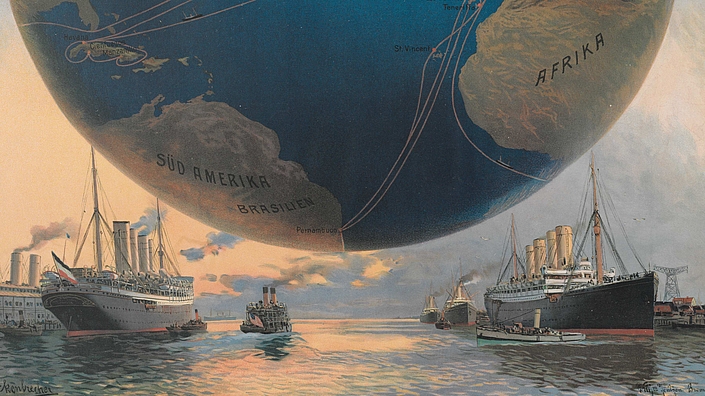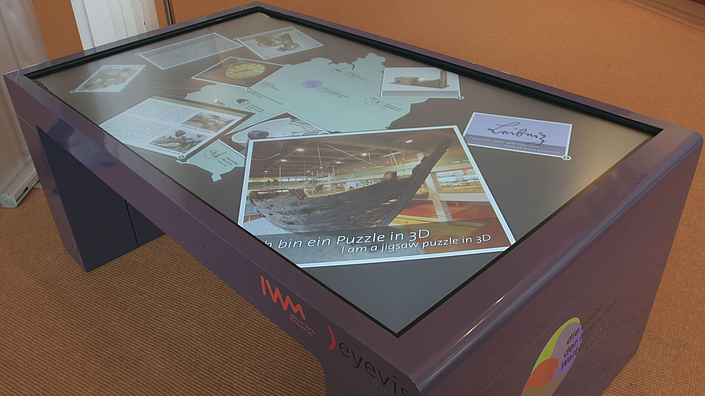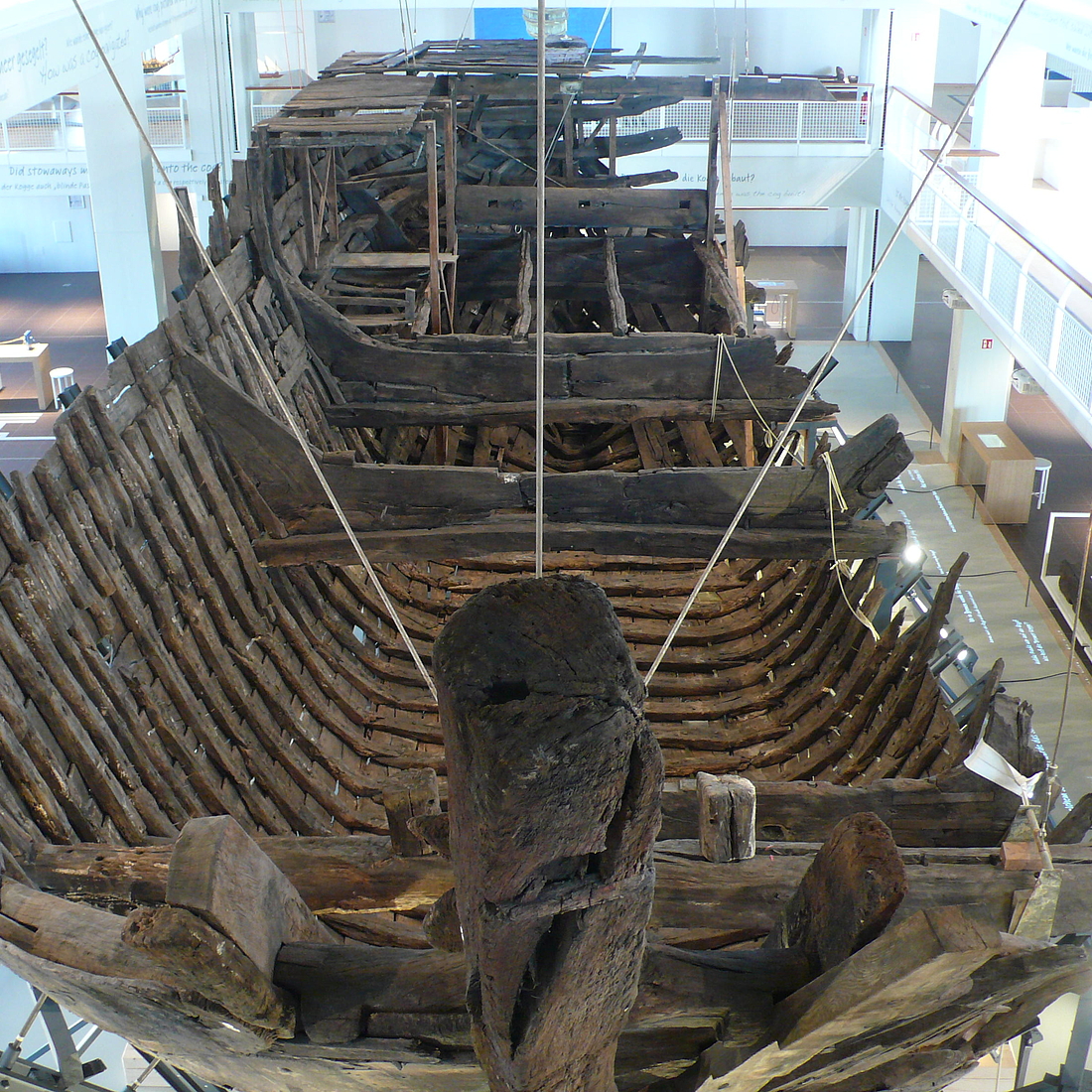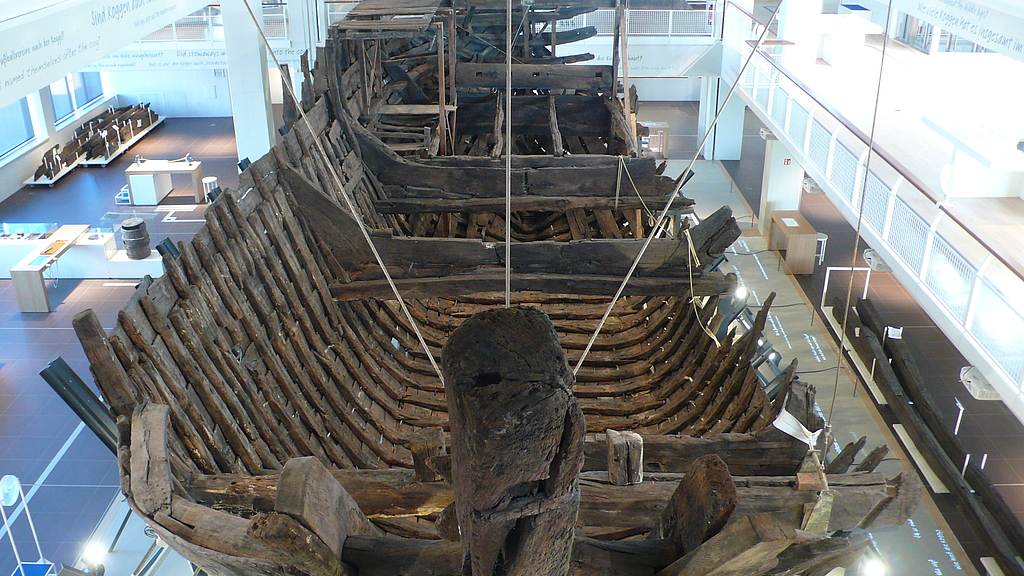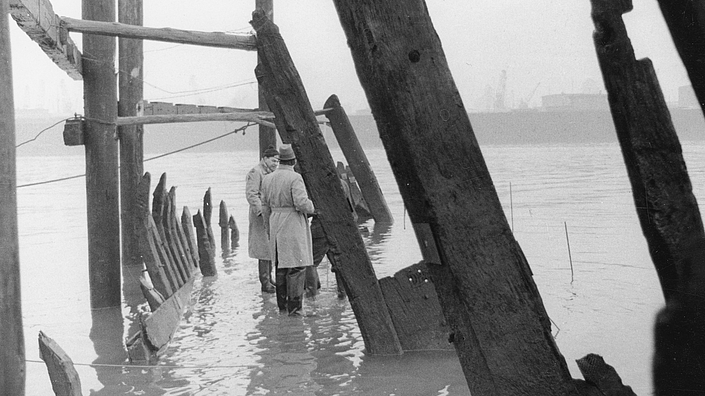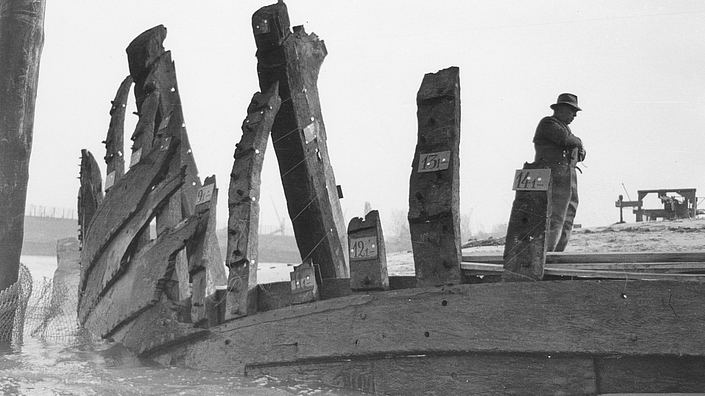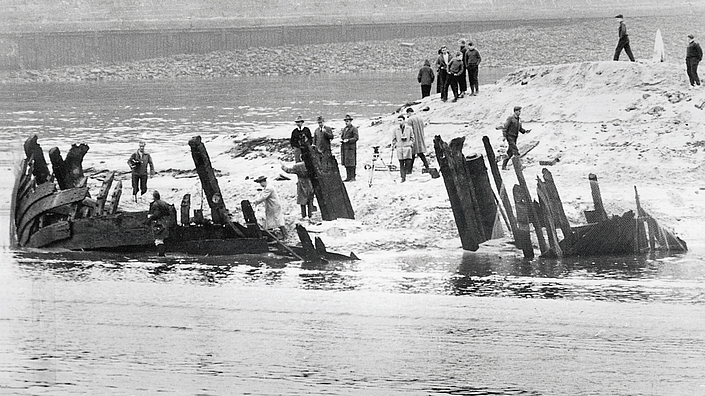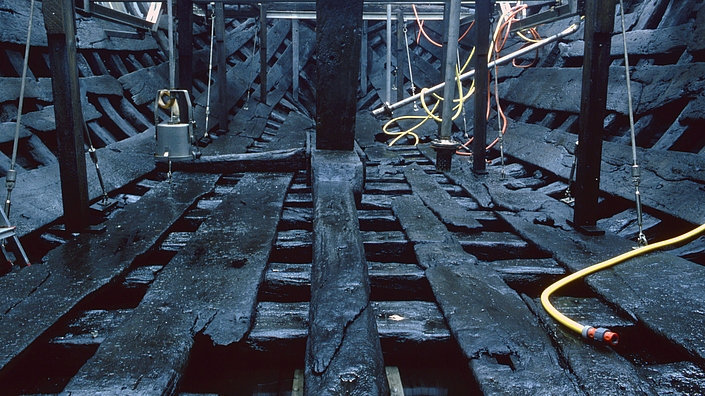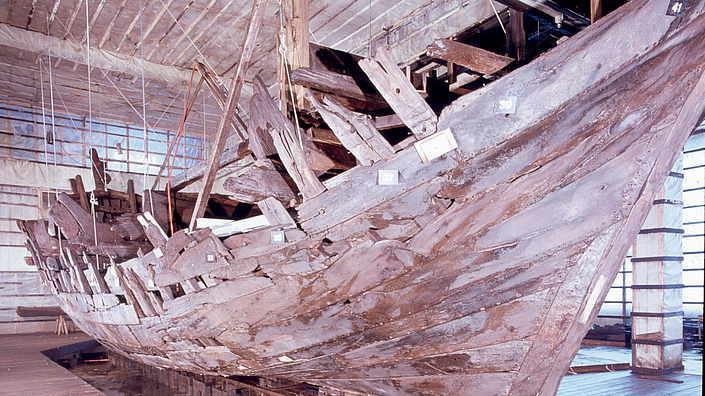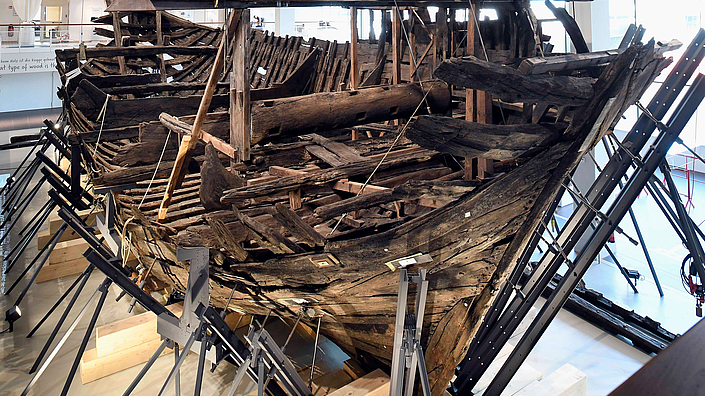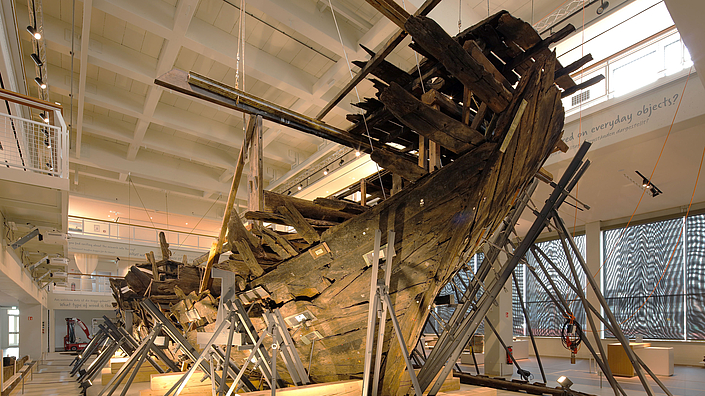The "Bremen cog" from the Hanseatic era - 600 years of history to marvel at
The "Bremen cog" is the best preserved medieval merchant ship in the world. In our exhibition you can learn more about life on board, the construction method and today's cult around the shipwreck of 1380
The discovery of the shipwreck in 1962 in the Weser was a sensation. Because the wooden remains turned out to be a cargo ship from the Hanseatic era. Ships with a similar appearance were previously only known as depictions on old seals of the Hanseatic cities. The elaborate recovery of the wreck in individual parts, the reconstruction in the German Maritime Museum and the years of conservation of the ship caused an international sensation. It took almost 40 years since the discovery until the preserved ship could be shown to the public in the museum's cog hall named after it. Since its discovery, the "Bremen cog" has always been an object of maritime interdisciplinary research. The exhibition around the cog, which opened in 2017, now shows the more than 600-year-old shipwreck in the light of recent research.
The exhibition on the cog tells the story of the cargo ship and of seafaring in the Hanseatic era
In the middle of our cog hall, the imposing shipwreck, over 20 m long and almost 8 m wide, can be viewed from three floors and from three perspectives. Starting from the "Bremen cog", the exhibition tells of the heyday of the Hanseatic League, of shipping in the Middle Ages, of life on board and the fight against pirates. The archaeological find is the subject of many questions which are dealt with in the exhibition: How was the ship built in the Middle Ages and what fate did it suffer? Did the ships of the Hanseatic merchants also cross the North Atlantic or did they stay close to the coast? How can the ship be preserved for the future? The exhibition also tells about how people imagined cogs about 100 years ago and how the cog is marketed as a symbol today. The exhibition shows that the ship is still an exciting object of research.
The wreck of the cargo ship "Bremen cog" is still the object of research
After the successful conservation of the cog with the synthetic wax polyethylene glycol (PEG), modern methods of preventive conservation such as photogrammetric examinations are used today. This allows possible deformations of the wood to be detected and appropriate measures to protect the object can be taken. From 2014 to 2016, the German Maritime Museum participated with the "Bremen cog" in the "Colour and Space in Cultural Heritage" (COSCH) programme funded by the European Union, which is dedicated to the development of new technologies for the documentation of cultural heritage. An interdisciplinary team from the departments of archaeology, history and archaeozoology conducted research from 2015 to 2018 in the Leibniz research project "Between the North Sea and the Norwegian Sea: Interdisciplinary Research on the Hanseatic League", starting with the cog, into medieval shipbuilding and the North Atlantic trade of Hanseatic merchants. Results of the project have been incorporated into the new exhibition. An ongoing project deals with the symbolic meaning and pictorial history of "cogs" in the 19th and 20th centuries.
Further reading
Hoffmann, Gabriele und Schnall, Uwe (Hg.): Die Kogge. Sternstunde der deutschen Schifffsarchäologie (Schriften des Deutschen Schifffahrtsmuseums, Bd. 60), Hamburg 2003
Kleingärtner, Sunhild: Kogge-Halle im Deutschen Schifffahrtsmuseum mit neuem Ausstellungskonzept
in: Deutsche Schiffahrt 39 (2017), Heft 1, S. 18-19
Mehler, Natascha; Belasus, Mike; Holterman, Bart und Küchelmann, Hans Christian: Die Expansion der Hanse in den Nordatlantik im Fokus von Archäologie und Geschichte, in: Blickpunkt Archäologie 2016, Heft 2, S. 150-157
Schilling, Ruth: Die Bremer Kogge als Objekt der Forschung im Museum, in: Deutsche Schiffahrt 37 (2015), Heft 2, S. 21-23
Related contributions
-Between North Sea and Norwegian Sea
The islands of Iceland, Shetland and the Faroe Islands are becoming the focus of Hanseatic research. For almost two hundred years, ships brought stockfish from there to the coastal towns of northern Germany.
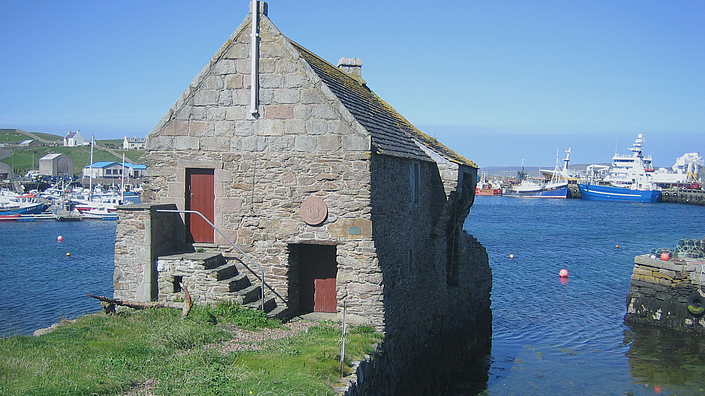
Civil and military shipping
Around 1900, the first phase of globalization began, the world grew together. This was largely due to civil and military shipping, which at that time were working closely together
